The New Skillset: Preparing for an AI-Dominated Workforce
AI Workforce Development
The New Skillset: Preparing for an AI-Dominated Workforce
Setting the Stage: A Workforce on the Brink of Change
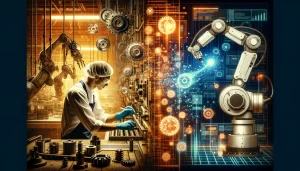 As automation and AI continue to advance, the global workforce faces a rapidly changing landscape. Many occupations will either be replaced or require workers to reskill for new roles. This shift is already underway, with industries such as manufacturing, finance, and healthcare seeing AI-driven changes at an unprecedented pace. To navigate this transition, both individuals and companies must embrace new skillsets that prioritize human ingenuity, adaptability, and technical proficiency.
As automation and AI continue to advance, the global workforce faces a rapidly changing landscape. Many occupations will either be replaced or require workers to reskill for new roles. This shift is already underway, with industries such as manufacturing, finance, and healthcare seeing AI-driven changes at an unprecedented pace. To navigate this transition, both individuals and companies must embrace new skillsets that prioritize human ingenuity, adaptability, and technical proficiency.
Previously in the Series: Disruption Unfolding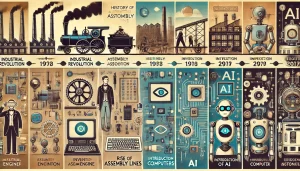
In our earlier blogs, we established a comprehensive foundation for understanding how AI and automation are poised to reshape traditional career paths. We began by analyzing the historical context of automation and technological advancements in “The Dawn of Automation: A Historical Perspective,” which highlighted how previous disruptions, like the Industrial Revolution, parallel the current AI-driven transformations. Building on this, the second post, “Mapping the Workforce of Tomorrow,” explored which industries and occupations are most vulnerable to job displacement, utilizing data from the McKinsey Global Institute to segment high-risk and low-risk roles.
Our third post, “The Automation Scenarios: Predicting the Impact,” took a deeper dive into various automation adoption scenarios—rapid, moderate, and slow—each with distinct implications for the scale and pace of job displacement. Understanding these scenarios is crucial for anticipating the transformative impact on sectors ranging from manufacturing to healthcare. Together, these blogs set the stage for recognizing the urgency of reskilling and adapting to an evolving job market where technological change is the only constant.
But the series doesn’t stop there.
What’s Next? Preparing for a New Reality
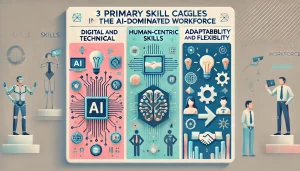 Upcoming posts will focus on the practical aspects of this shift. We’ll delve into the specific sectors where human-AI collaboration is likely to redefine roles, how to leverage unique human skills to stay relevant, and even examine ethical considerations surrounding AI deployment. In our final posts, we’ll address what the advent of the singularity could mean for the workforce—and why preparing for it should start today.
Upcoming posts will focus on the practical aspects of this shift. We’ll delve into the specific sectors where human-AI collaboration is likely to redefine roles, how to leverage unique human skills to stay relevant, and even examine ethical considerations surrounding AI deployment. In our final posts, we’ll address what the advent of the singularity could mean for the workforce—and why preparing for it should start today.
Stay tuned as we continue to unravel the future of work and explore how to thrive in the age of automation!
Insights from the McKinsey Global Institute and Mustafa Suleyman’s The Coming Wave underscore the need for comprehensive preparation strategies, focusing on reskilling and lifelong learning to remain competitive in the age of automation. Here is a link to an authoritive overview of The Coming Wave.
Skills in Demand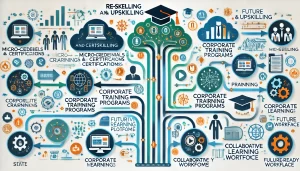
The skills that will be in high demand as AI becomes more integrated into the workforce can be categorized into three primary areas:
1.Digital and Technical Skills
•AI and Machine Learning expertise.
•Data analysis and interpretation.
•Robotics and automation systems management.
These roles require proficiency in programming languages, familiarity with AI algorithms, and an understanding of how to integrate automated systems into various business processes.
2.Human-Centric Skills
•Creative problem-solving.
•Leadership and people management.
•Social and emotional intelligence.
While technical skills will dominate in many roles, human-centric skills will remain indispensable. As Suleyman notes, automation will amplify the need for uniquely human abilities, such as empathy, critical thinking, and the capacity to lead in uncertain environments.
3.Adaptability and Flexibility
•Ability to learn quickly and apply new knowledge.
•Comfort with changing technologies and processes.
Workers who can adapt to rapidly evolving technology will be better equipped to transition into emerging roles.
Reskilling and Upskilling Strategies
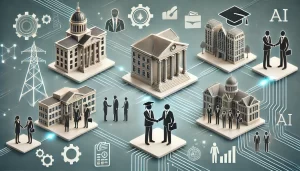 Both companies and workers must focus on reskilling and upskilling initiatives. According to McKinsey, more than 375 million workers may need to switch occupational categories by 2030 due to automation adoption scenarios . Effective strategies include:
Both companies and workers must focus on reskilling and upskilling initiatives. According to McKinsey, more than 375 million workers may need to switch occupational categories by 2030 due to automation adoption scenarios . Effective strategies include:
•Micro-Credentials and Certifications
Short-term, focused training programs can help employees gain new skills without a full career change.
•Corporate Training Programs
Organizations should invest in continuous learning, partnering with educational institutions to provide workers with opportunities to upskill in AI-related fields.
•Collaborative Learning Platforms
Platforms like Coursera, Udacity, Thinkific and LinkedIn Learning provide flexible options for employees to upgrade their skills in AI, machine learning, and data science.
Proactive Upskilling Strategies
Mustafa Suleyman emphasizes that proactive strategies are crucial to avoid having a “serious number of losers” in the workforce as automation and AI adoption accelerate . Governments, educational institutions, and businesses must collaborate to design comprehensive support systems that safeguard against widespread job displacement. Some of Suleyman’s key strategies include:
•Government-Backed Lifelong Learning Accounts
•Suleyman advocates for governments to establish lifelong learning accounts for every citizen, funded through public or private partnerships, that can be used for courses, certifications, and upskilling initiatives. This would ensure that all workers have access to the resources necessary to adapt to evolving job requirements.
•Job Transition Support Programs
•Suleyman suggests that policymakers create transition support programs that offer temporary financial assistance, career counseling, and placement services to workers at risk of displacement. This would help bridge the gap for individuals as they reskill for new roles in high-demand sectors.
•Employer-Driven Training Initiatives
•Businesses should establish robust training programs to equip employees with skills for future roles. This can include internal academies, partnerships with external education providers, or subsidized tuition for in-demand skills like AI, data science, and automation management.
•Public-Private Partnerships for Workforce Development
•Suleyman encourages the formation of public-private partnerships aimed at workforce development, where companies, local governments, and educational institutions jointly fund and operate reskilling programs tailored to regional needs.
•Tax Incentives for Reskilling Investments
•Governments should provide tax incentives to companies that invest in workforce training and development, encouraging firms to prioritize upskilling over automation-led layoffs.
•Mandatory AI Impact Assessments
•Suleyman advocates for AI impact assessments similar to environmental impact reports, where companies must evaluate and disclose the potential impact of AI adoption on employment. This would help stakeholders plan more effectively for reskilling and transition strategies.
•Universal Basic Adjustment Benefits
•Suleyman introduces the concept of “Universal Basic Adjustment Benefits,” a targeted form of Universal Basic Income (UBI) specifically designed to support workers who are displaced by technology, ensuring they have a financial safety net as they reskill or transition to new fields.
By implementing these proactive measures, Suleyman argues, governments and businesses can mitigate the negative effects of AI and automation, creating a more inclusive and adaptable workforce capable of thriving in the new economy
Lifelong Learning: A Critical Approach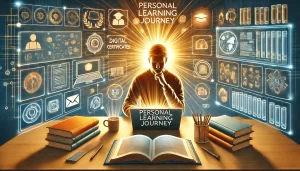
Lifelong Learning: The Path to Future-Proofing Your Career
Lifelong learning is no longer optional—it’s a necessity for anyone looking to survive and thrive in an AI-dominated workforce. While governments and corporations may eventually respond to the workforce disruption, waiting on them would be a mistake. Their history shows a pattern of reacting slowly to change rather than proactively preparing for it. As Suleyman himself warns, automation will lead to a continual cycle of skill depreciation and renewal, making lifelong education the only viable strategy to remain competitive .
Instead of relying on outside institutions, individuals should seize the initiative and take personal responsibility for future-proofing their careers. This means adopting a strategy of continuous personal reinvention. Our online course, Mastering the Art of Wealth Creation: A Journey Through Mind Power and Marketing, offers the guidance and tools necessary to navigate this uncertain future effectively. Rather than waiting for top-down solutions that may come too late, our course empowers you to build a dynamic, forward-thinking skillset that adapts to shifting industry demands.
Proactive Strategies for Personal Preparedness:
1.Embrace a Growth Mindset with Real-World Training
The first step is to cultivate a mindset that embraces change and welcomes new challenges. In our course, you’ll engage in practical exercises that push you beyond your comfort zone, helping you build the resilience needed to stay ahead of the curve.
2.Establish Your Own Learning Network
While traditional educational institutions may lag behind, you can stay on the cutting edge by tapping into alternative networks. Our course not only offers a supportive community of like-minded entrepreneurs but also connects you to industry thought leaders and mentors, ensuring you’re always aware of the latest trends.
3.Develop Marketable Skills Using AI Tools
AI will continue to transform industries, making familiarity with these tools essential. Our curriculum includes training on AI-driven platforms and digital marketing strategies that can help tailor your learning experiences to your specific career goals, enhancing your adaptability.
4.Create a Personalized Wealth Creation Plan
Rather than just acquiring skills, it’s essential to have a clear strategy for how to monetize them. The Mastering the Art of Wealth Creation course offers step-by-step modules on building a digital business that generates income in both stable and disrupted markets.
Now is the time to prepare. Those who take action now—by investing in their own development, building versatile skill sets, and implementing contingency plans—will not just survive the workforce transformation, but will thrive in it. Don’t wait for government or big business to provide solutions; take control of your destiny by joining us today.
Conclusion
The skills needed to thrive in an AI-dominated workforce are a blend of technical, human, and adaptive capabilities. Companies that prioritize reskilling will gain a competitive advantage, while workers who embrace lifelong learning will be best positioned to seize new opportunities. The future of work is being defined now, and those who prepare will thrive as automation and AI reshape the world.
#FutureOfWork #AI #Automation #WorkforceDevelopment #Reskilling #Upskilling #LifelongLearning #AIImpact

John Rogers is a former Wall Street portfolio manager and served as CEO of Premium Enterprises and President of The Colorado Tire Recycling Center. He transitioned to digital marketing, founding WealthCreationMastermind.com to empower home-based entrepreneurs with cutting-edge strategies. Creator of the “Mastering the Art of Wealth Creation” online course, John has driven significant growth in network marketing, achieving the Blue Diamond rank and earning the title of Univera Associate of the Year in 2015. His expertise in leveraging technology for financial success transforms how entrepreneurs achieve their business goals.